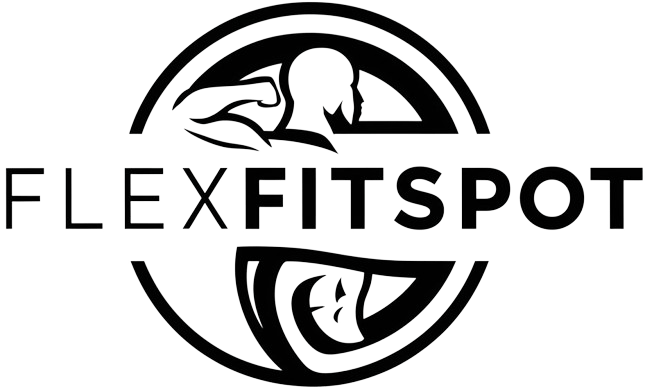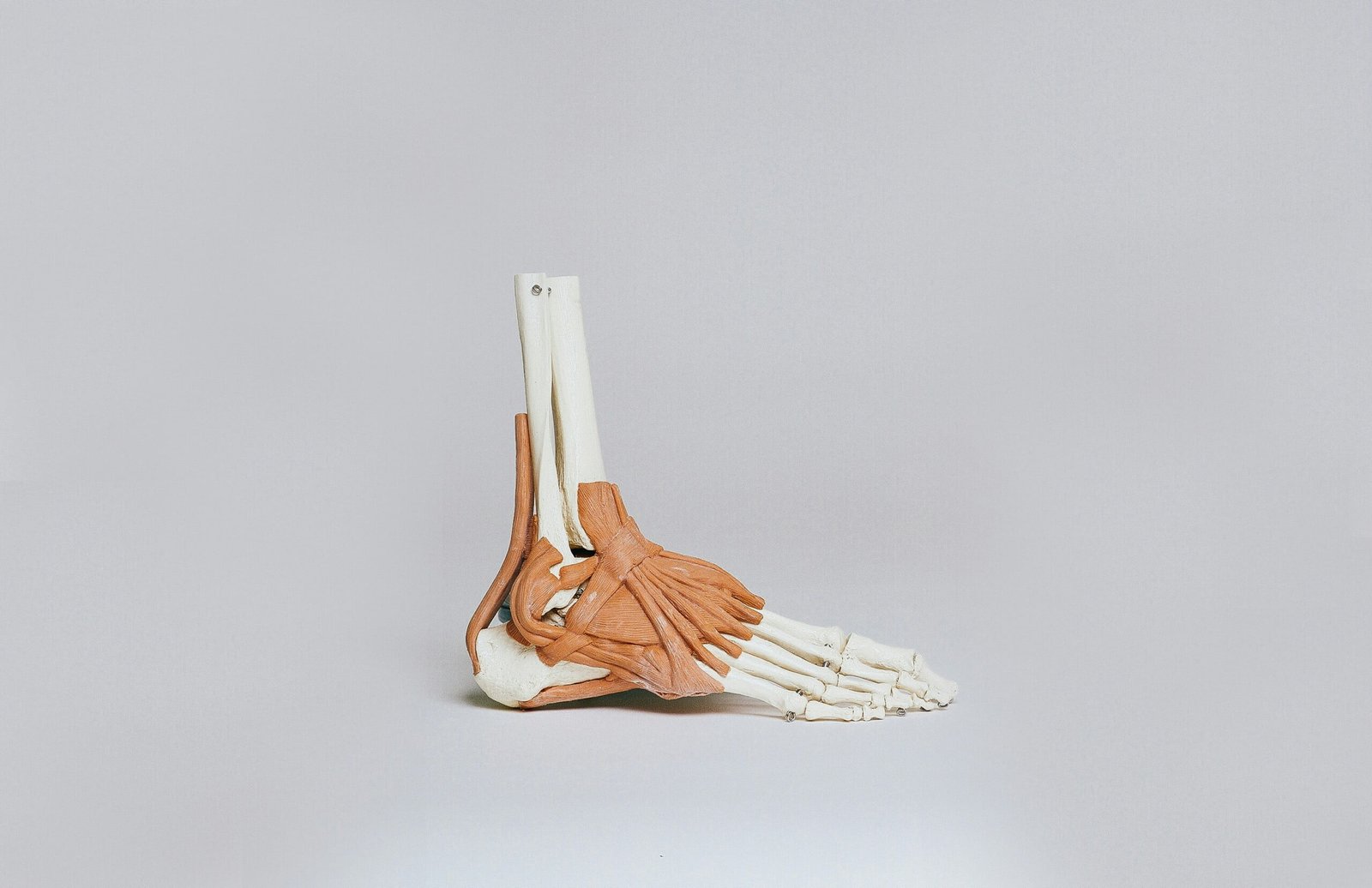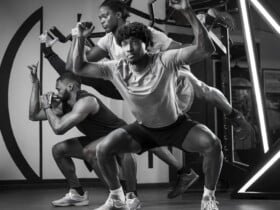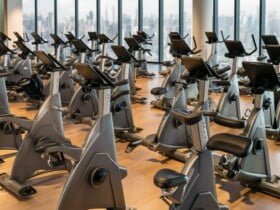Introduction to Exercise Ball Workouts
The exercise ball, also known as a stability ball, Swiss ball, or balance ball, is a versatile fitness tool that has gained immense popularity in the fitness community. Its unique capability to engage multiple muscle groups simultaneously makes it an effective addition to any workout regimen. One of the primary benefits of using an exercise ball is the enhancement of balance and stability. When performing exercises on an unstable surface, the body is forced to engage the core muscles to maintain equilibrium, thus improving overall core strength.
Exercise ball workouts are suitable for individuals of all fitness levels, from beginners to advanced athletes. The ball’s soft and pliable nature provides a low-impact exercise option, which is particularly beneficial for those recovering from injuries or experiencing joint pain. Moreover, the exercises can be easily modified to match one’s fitness level, making it a versatile piece of equipment for a wide range of users.
Incorporating an exercise ball into your routine can lead to significant improvements in full-body toning. The unstable surface of the ball challenges the body to stabilize itself during movements, which not only targets the core but also engages muscles in the arms, legs, and back. This comprehensive approach to muscle engagement helps in achieving a balanced and toned physique. Additionally, the dynamic nature of exercise ball workouts can prevent workout monotony, keeping fitness routines fresh and engaging.
Incorporating an exercise ball into your workout routine can lead to enhanced muscle engagement, improved balance, and overall physical stability. Therefore, understanding the diverse range of exercises that can be performed with this equipment is crucial for maximizing its benefits. The following sections will delve into ten must-try exercise ball workouts that are designed to provide a full-body toning experience.
1. Stability Ball Crunches
Stability ball crunches are an excellent exercise for targeting the core muscles, particularly the rectus abdominis. To perform this exercise correctly, start by sitting on the stability ball with your feet flat on the floor. Slowly roll down until your lower back is supported by the ball. Your thighs and torso should be parallel to the floor, forming a right angle at your knees.
Place your hands behind your head, ensuring your elbows are wide and not pulling on your neck. Engage your core by drawing your belly button towards your spine. Begin the crunch by exhaling and lifting your upper back off the ball, curling your torso towards your knees. Aim to lift your shoulder blades completely off the ball while maintaining a neutral neck position. Hold the contraction for a moment before inhaling and slowly lowering back to the starting position.
Proper form is crucial for maximizing the benefits of stability ball crunches. Keep your movements controlled and avoid using momentum. Focus on engaging your abdominal muscles throughout the exercise. Additionally, ensure that your lower back remains in contact with the ball to support your spine and prevent injury.
For beginners, start with 2-3 sets of 10-15 repetitions. As you become more comfortable, you can increase the number of sets or repetitions. Advanced users can add variations to intensify the workout. One such variation is the stability ball oblique crunch, where you twist your torso to the side during the upward motion, targeting the oblique muscles. Another option is to incorporate weights by holding a medicine ball or dumbbell against your chest while performing the crunches.
Incorporating stability ball crunches into your workout routine can significantly enhance core strength and stability, providing a solid foundation for overall fitness and body toning.
2. Exercise Ball Squats
Exercise ball squats are an effective way to incorporate balance and stability into your lower body workout. By using an exercise ball, you can maintain proper alignment and engage your core muscles throughout the movement. To execute this exercise, start by placing the exercise ball against a wall and position your lower back against the ball. Stand with your feet shoulder-width apart and a few steps away from the wall, ensuring you have a stable base.
Begin the squat by slowly bending your knees and lowering your hips towards the floor, allowing the exercise ball to roll smoothly up your back. Keep your chest lifted and your core engaged to maintain balance. Descend until your thighs are parallel to the floor, ensuring that your knees do not extend beyond your toes. Hold the position for a moment, then press through your heels to return to the starting position.
Exercise ball squats primarily target the quadriceps, hamstrings, and glutes, while also engaging the core for stability. This compound movement is beneficial for overall lower body toning and strength. For those seeking to increase the intensity, you can hold a pair of dumbbells in your hands or perform the squats on one leg at a time. Conversely, if you’re new to this exercise or find it challenging, you can reduce the range of motion by not lowering your hips as close to the floor.
Remember to focus on maintaining proper form throughout the exercise. Keep your movements controlled and avoid using momentum. This will help you maximize the benefits of the exercise ball squats while minimizing the risk of injury. With regular practice, exercise ball squats can be a valuable addition to your full-body toning routine, offering both strength and stability benefits.
3. Plank with Exercise Ball
The plank with an exercise ball is a dynamic variation of the traditional plank that intensively engages the core, shoulders, and arms. This exercise not only enhances muscle strength but also significantly improves balance and stability. To perform this exercise correctly, start by kneeling on the floor and placing your forearms on the exercise ball. Extend your legs behind you, positioning your body in a straight line from your head to your heels, ensuring your shoulders are directly over your elbows.
The core challenge of this plank variation comes from maintaining stability. The exercise ball’s instability forces your core muscles to work harder to keep your body steady. It is crucial to engage your abdominal muscles throughout the exercise to prevent your lower back from sagging. Keep your neck and spine in a neutral position by looking at a spot on the floor about a foot in front of you.
Proper form is paramount to avoid common mistakes and potential injuries. Avoid letting your hips drop or raising them too high. Both errors can reduce the effectiveness of the exercise and place undue stress on your lower back. Additionally, it is important to keep your entire body tight and aligned. If you find maintaining this position difficult, start with shorter holds and gradually increase the duration as your strength improves.
For an added challenge, try performing this exercise with your feet elevated on a bench or another stable surface. This variation will further engage your core and upper body muscles. Remember, quality over quantity is essential. Focus on maintaining correct form rather than extending the duration beyond your current capability. By incorporating the plank with an exercise ball into your workout routine, you will experience significant improvements in core strength, stability, and overall full-body toning.
4. Exercise Ball Hamstring Curl
The Exercise Ball Hamstring Curl is an effective workout designed to target the hamstrings and glutes, thereby enhancing lower body strength and stability. To perform this exercise, begin by lying on your back with your arms extended at your sides for balance. Position your heels on top of the exercise ball, ensuring that your legs are fully extended. This is your starting position.
Engage your core and glutes as you lift your hips off the ground, forming a straight line from your shoulders to your heels. It’s crucial to maintain a controlled motion throughout the exercise to maximize muscle engagement and minimize the risk of injury. Slowly, using your hamstrings, roll the exercise ball toward your glutes by bending your knees. Ensure that your hips remain elevated and your body stays aligned. Once the ball reaches the closest point to your glutes, pause briefly and squeeze your hamstrings.
Gradually extend your legs back to the starting position while keeping your hips elevated. Concentrate on the muscle contraction during both the curling and extending phases to fully engage the hamstrings and glutes. Perform this movement for a set of 10-15 repetitions, depending on your fitness level.
The benefits of the Exercise Ball Hamstring Curl extend beyond mere muscle toning. This exercise significantly contributes to the enhancement of lower body stability and strength, which is crucial for overall physical performance and injury prevention. By incorporating this workout into your routine, you can expect improved hamstring flexibility, stronger glutes, and better balance.
Incorporating controlled movements and proper form are essential components of this exercise. Ensuring these elements will not only optimize the effectiveness of the workout but also safeguard against potential injuries, making the Exercise Ball Hamstring Curl a vital addition to any fitness regimen.
5. Exercise Ball Pike
The Exercise Ball Pike is a powerful move that targets your core muscles while simultaneously engaging your upper body strength. This advanced exercise requires balance, stability, and coordination, making it an excellent addition to any full-body toning routine.
To begin, place the exercise ball on a stable surface and get into a push-up position with your shins resting on the ball. Your hands should be directly under your shoulders, and your body should form a straight line from head to heels. This is your starting position.
From this position, engage your core muscles and begin to lift your hips toward the ceiling. As your hips rise, your feet will roll forward on the ball, and your torso will move closer to a vertical position. Aim to create a ‘V’ shape with your body, ensuring that your legs remain straight and your core remains tight throughout the movement. Hold the peak position momentarily before slowly lowering your hips back to the starting position.
Throughout the exercise, maintain control and avoid letting your lower back sag. Proper form is crucial to prevent injury and maximize the effectiveness of the pike. It is essential to keep your movements smooth and deliberate, focusing on the contraction of your abdominal muscles.
For those new to the Exercise Ball Pike, it is advisable to start with simpler exercises to build the necessary core strength and balance. Exercises such as the plank or knee tucks using the exercise ball can serve as effective preparatory moves. As you gain confidence and stability, gradually progress to the pike, ensuring that you maintain proper form throughout.
Incorporating the Exercise Ball Pike into your workout routine can significantly enhance your core strength and upper body stability. With consistent practice, this challenging exercise will contribute to improving your overall fitness and achieving a well-toned physique.
6. Exercise Ball Push-Ups
Exercise ball push-ups are a dynamic variation of the traditional push-up that introduces an element of instability, significantly enhancing the workout. This exercise can be performed in multiple ways, offering versatility to match different fitness levels and goals.
One common variation involves placing the exercise ball under your hands. Start by kneeling on the floor, positioning the ball directly in front of you. Place your hands on the ball, ensuring they are shoulder-width apart. Extend your legs behind you, balancing on your toes to assume a plank position. From here, lower your chest toward the ball by bending your elbows, then push back up to the starting position. This variation intensifies the workout for your chest, shoulders, and triceps due to the instability of the ball.
Alternatively, you can place the exercise ball under your feet. Begin in a push-up position with your hands on the floor and your shins resting on the ball. Maintain a straight line from your head to your heels. Lower your body by bending your elbows until your chest nearly touches the floor, then push back up. This variation not only targets the upper body muscles but also challenges your core stability and balance.
For those at a beginner level, modifications include performing push-ups with the ball under your knees instead of your feet to reduce the intensity. As your strength and stability improve, you can progress to more challenging variations. Advanced practitioners may incorporate movements such as rolling the ball forward or backward while performing the push-up to further engage the core and enhance muscle activation.
Exercise ball push-ups are an excellent addition to any fitness routine, offering substantial benefits in terms of strength and stability. By incorporating these variations, you can effectively target your chest, shoulders, and triceps while simultaneously challenging your core, resulting in a comprehensive full-body workout.
7. Exercise Ball Wall Squats
Exercise ball wall squats are a highly effective workout for targeting the quads, glutes, and core muscles. To perform this exercise, position yourself with your back against an exercise ball pressed against a wall. Ensure the ball is placed in the curve of your lower back, providing adequate support and promoting proper posture throughout the movement.
Begin by standing with your feet shoulder-width apart and slightly forward, so your body forms a stable base. Slowly lower your body into a squatting position by bending your knees and allowing the exercise ball to roll down the wall. Aim to reach a 90-degree knee bend, with your thighs parallel to the ground. Ensure your knees are aligned with your toes and do not extend past them to avoid unnecessary strain on the joints.
Throughout the exercise, maintain a neutral spine and engage your core muscles to stabilize your body. This not only helps in maintaining balance but also enhances the workout’s effectiveness by activating deeper muscle groups. Hold the squat position for a few seconds before pushing through your heels to return to the starting position. Repeat for the desired number of repetitions.
The exercise ball’s unique support allows you to achieve a deeper squat than traditional methods, which increases the engagement of the glutes and quads. Additionally, the ball’s instability requires continuous core activation, making this exercise particularly beneficial for overall core strengthening. Proper posture is crucial to maximize benefits and prevent injury.
Incorporating exercise ball wall squats into your workout routine can significantly enhance muscle tone and strength in your lower body and core. This versatile exercise is suitable for all fitness levels, offering a scalable challenge by adjusting the depth of the squat or adding weights for increased resistance.
8. Seated Ball Balance
The seated ball balance exercise is an excellent workout for enhancing core stability and overall balance. To perform this exercise, begin by sitting on an exercise ball with your feet flat on the ground, hip-width apart. Ensure that your knees are bent at a 90-degree angle and that you are sitting up straight. Engage your core muscles by pulling your navel towards your spine, and maintain this engagement throughout the exercise.
Once you are stable and balanced, lift one foot off the ground while keeping the other foot firmly planted. Hold this position for a few seconds, focusing on maintaining your balance and posture. Then, slowly place your foot back down and repeat the process with the other leg. For those new to this exercise, it might be helpful to start by lifting each foot for a shorter duration and gradually increasing the time as your balance improves. Aim to perform 10-15 lifts per leg for a complete set.
Maintaining proper posture is crucial during the seated ball balance exercise. Ensure that your back remains straight, shoulders relaxed, and your head aligned with your spine. Avoid slouching or leaning too far forward or backward, as this can reduce the effectiveness of the workout and increase the risk of injury.
The benefits of the seated ball balance exercise extend beyond just improving balance. By consistently engaging the core muscles, this exercise helps to strengthen the abdominal muscles and lower back, contributing to better posture and reduced back pain. Additionally, the instability of the exercise ball forces the body to make continuous small adjustments, enhancing proprioception and overall body awareness.
Incorporating the seated ball balance exercise into your routine is a practical way to boost your core stability and balance, which are essential components of overall physical fitness. Whether you are a beginner or an experienced fitness enthusiast, this exercise can be adapted to suit your level and progressively challenge your stability and strength.
Conclusion and Additional Tips: Exercise Ball Workouts
Incorporating exercise ball workouts into your fitness routine offers a multitude of benefits. These workouts not only improve overall muscle tone but also enhance core stability, balance, and flexibility. Regular use of an exercise ball can lead to better posture, reduced risk of injury, and increased functional strength, making everyday activities easier and more efficient.
When starting out with exercise ball workouts, it’s crucial to select the right size ball. Generally, a ball that allows your knees to be at a right angle when sitting on it is ideal. This ensures proper alignment and makes exercises more effective. Ensure you inflate the ball to the correct firmness; a well-inflated ball provides better support and stability, which is vital for maintaining proper form during exercises.
Creating a safe workout environment is equally important. Use the exercise ball on a non-slip surface to prevent any movement that could lead to falls or injuries. Additionally, clear the area of any obstacles that might interfere with your workout space. Wearing appropriate workout attire and footwear can also contribute to a safer exercise experience.
As you become more comfortable with basic exercise ball workouts, gradually progress to more challenging variations. This progression not only keeps your routine interesting but also continues to build strength and endurance. Listen to your body and take breaks as needed to avoid overexertion.
In conclusion, exercise ball workouts are a versatile and effective way to enhance your fitness regimen. By choosing the right equipment, ensuring a safe environment, and progressing at a comfortable pace, you can reap the full benefits of these exercises. Give these workouts a try and experience the rewarding journey towards full-body toning and improved well-being.
























